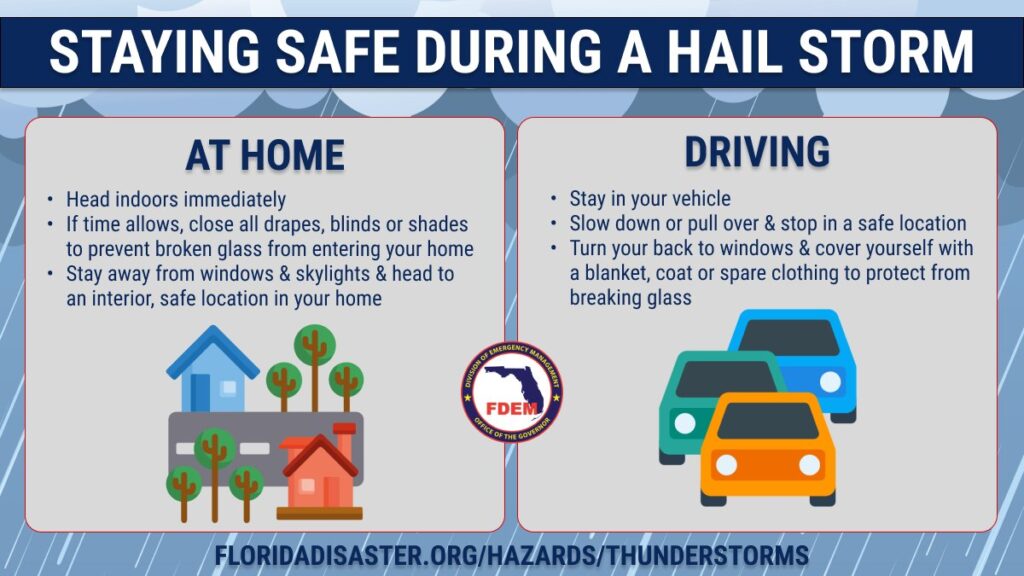
Driving through a hailstorm can be a nerve-wracking experience. The sudden barrage of ice pellets against your car can feel like being caught in a miniature blizzard, and the potential for damage is real. This article will delve into the dangers of driving in hail, outlining the risks involved and providing practical tips to help you stay safe on the road during these unpredictable weather events.
From understanding the severity of hailstorm hazards to learning how to minimize vehicle damage and maintain visibility, we’ll equip you with the knowledge needed to navigate a hailstorm safely. By following the guidelines outlined here, you can significantly reduce your risk of accidents and ensure a smoother journey even when faced with this challenging weather phenomenon.
Hailstorm Safety Risks
Hailstorms pose a significant threat to drivers due to their unpredictable nature and the potential for severe damage. The size and density of hailstones can vary greatly, ranging from small pellets to large chunks of ice that can cause substantial harm.
One of the primary dangers is reduced visibility. Heavy hail can obscure your view of the road ahead, making it difficult to judge distances and react to hazards in time. This significantly increases the risk of collisions, especially at higher speeds. Additionally, hailstones can accumulate on windshields and windows, further impairing your vision and creating a dangerous situation.
Beyond visibility issues, hailstorms can also lead to slippery road conditions. As hailstones melt and refreeze, they create an icy layer on the pavement, making it extremely difficult to maintain control of your vehicle. This is particularly hazardous when braking or turning, as even slight adjustments can result in skidding or loss of traction.
Driving in Hail Hazards
Driving through a hailstorm presents numerous hazards that demand careful attention and cautious driving practices. The combination of reduced visibility, slippery roads, and flying debris creates a challenging environment for drivers.
One crucial hazard is the potential for damage to your vehicle. Hailstones can dent metal panels, crack windshields, and puncture tires, leading to costly repairs. To minimize this risk, it’s essential to seek shelter as soon as possible when encountering hail. If you must drive through a hailstorm, reduce your speed significantly and maintain a safe distance from other vehicles.
Another hazard is the increased risk of accidents. The combination of reduced visibility, slippery roads, and distracted drivers can lead to collisions. Be extra vigilant while driving in hail, paying close attention to your surroundings and anticipating potential hazards.
Vehicle Damage from Hail
Hailstorms can inflict significant damage on vehicles, ranging from minor dents and scratches to severe structural damage. The size and density of hailstones determine the extent of the damage. Smaller hailstones may only cause superficial scratches or dents, while larger hailstones can penetrate metal panels, crack windshields, and puncture tires.
Hail damage can be costly to repair, especially if it involves significant structural damage. It’s important to assess the damage to your vehicle as soon as possible after a hailstorm and contact your insurance company for guidance on repairs.
Reducing Visibility During Hailstorms
Visibility is significantly reduced during hailstorms due to the dense barrage of ice pellets obscuring your view of the road ahead. This can make it difficult to judge distances, identify hazards, and react appropriately. To mitigate this risk, it’s crucial to take steps to improve visibility during a hailstorm.
One effective strategy is to slow down significantly. Reducing your speed allows you more time to react to changing conditions and potential hazards. Additionally, turn on your headlights to increase your visibility to other drivers and pedestrians.
Staying Safe While Driving in Hail
Driving through a hailstorm requires caution and adherence to specific safety practices. By following these guidelines, you can minimize the risks associated with driving in hail and ensure a safer journey.
First and foremost, seek shelter whenever possible. If you encounter a hailstorm while driving, pull over to a safe location as soon as possible. Avoid stopping on the side of a busy road or in an area where visibility is limited. Once you’ve found a safe spot, turn off your engine and remain inside your vehicle until the hail has passed.
If you must continue driving through a hailstorm, reduce your speed significantly and maintain a safe distance from other vehicles. Be extra vigilant and pay close attention to your surroundings. Avoid sudden braking or acceleration, as this can lead to skidding on slippery roads.
Conclusion
Driving in hail presents significant safety risks that demand careful consideration and proactive measures. From reduced visibility and slippery road conditions to the potential for vehicle damage, hailstorm hazards require drivers to exercise caution and vigilance. By understanding these risks and implementing the safety tips outlined in this article, you can significantly reduce your chances of encountering accidents or experiencing severe damage during a hailstorm. Remember, prioritizing safety and seeking shelter whenever possible is always the best course of action when driving through hail.
